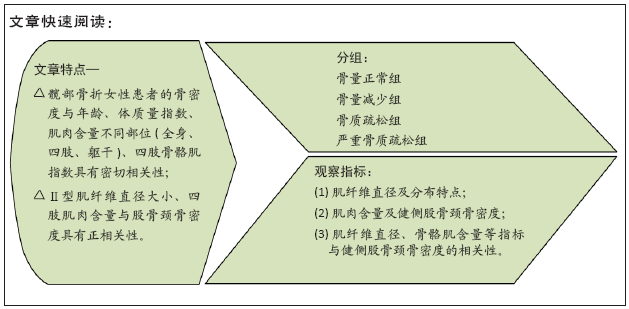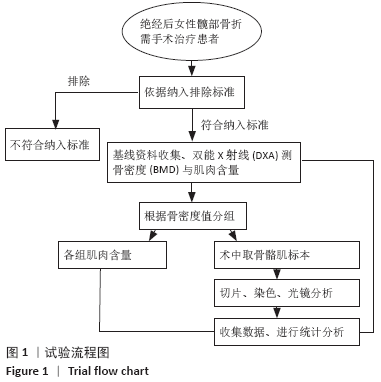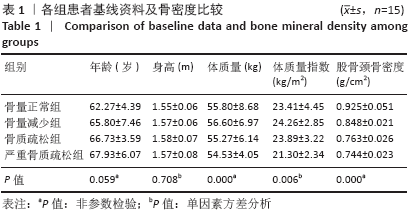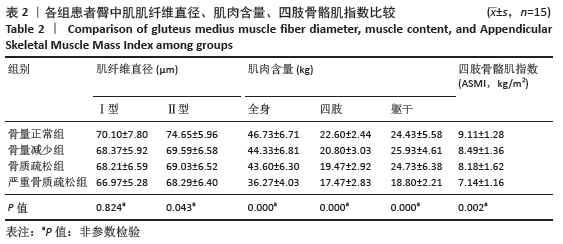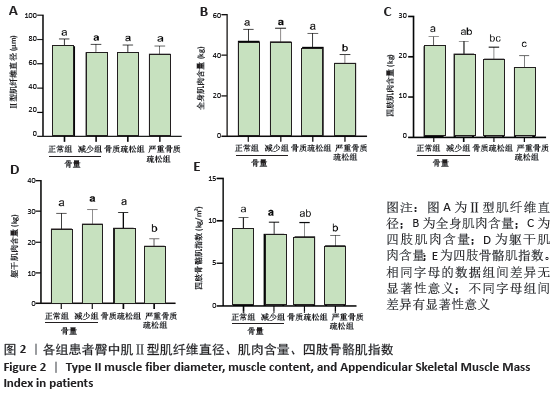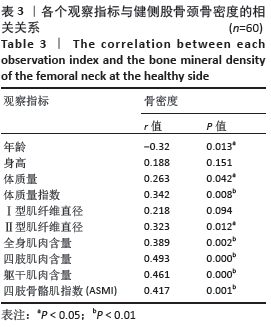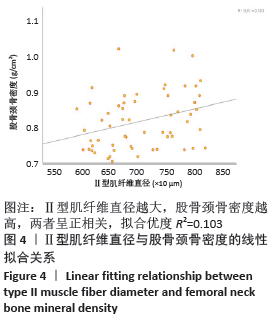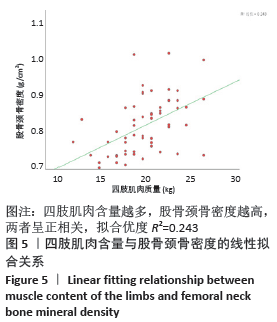[1] DIAB DL, WATTS NB. Postmenopausal osteoporosis.Curr Opin Endocrinol Diabetes Obes. 2013;20(6):501-509.
[2] LESLIE WD, MORIN SN. Osteoporosis epidemiology 2013: implications for diagnosis, risk assessment, and treatment. Curr Opin Rheumatol. 2014;6:440-446.
[3] MORIWAKI S, SUZUKI K, MURAMATSU M, et al. Delphinidin, one of the major anthocyanidins, prevents bone loss through the inhibition of excessive osteoblastogenesis in osteoporosis model mice. PLoS One. 2014;9:e97177.
[4] EASTELL R, BLACK DM, BOONEN S, et al. HORIZON Pivotal Fracture Trial. Effect of once-yearly zoledronic acid five milligrams on fracture risk and change in femoral neck bone mineral density. J Clin Endocrinol Metab. 2009;94:3215-3225.
[5] PISCITELLI P, BRANDI M, CAWSTON H, et al. Epidemiological burden of postmenopausal osteoporosis in Italy from 2010 to 2020: estimations from a disease model. Calcif Tissue Int. 2014;95:419-427.
[6] 杨丽君,吴永华,张俐.肌少症、骨质疏松症的关系及研究进展[J].中国骨质疏松杂志,2017,23(8):1112-1116.
[7] MONACO MD, VALLERO F, MONACO RD, et al. Prevalence of sarcopenia and its association with osteoporosis in 313 older women following a hip fracture. Arch Gerontol Geriatr. 2011;52(1):71-74.
[8] HWANG JA, KIM YS, LEEM AY, et al. Clinical implications of sarcopenia on decreased bone density in men with COPD.Chest. 2017;151(5): 1018-1027.
[9] BINKLEY N, BUEHRING B. Beyond FRAX:It’s time to consider “Sarco-Osteopenia”. J Clin Densitom. 2009;12(4):413-416.
[10] TERRACCIANO C, CELI M, LECCE D, et al. Differential features of muscle fiber atrophy in osteoporosis and osteoarthritis. Osteoporos Int. 2013; 24(3):1095‐1100.
[11] 章涛,张潜,胡锡阶,等.改良骨骼肌肌纤维分型ATP酶染色方法[J].西安交通大学学报(医学版),2009,30(2):254-256.
[12] BROOKE MH, KAISER KK. Muscle fiber types: how many and what kind?. Arch Neurol. 1970;23(4):369-379.
[13] 中华医学会骨质疏松和骨矿盐疾病分会.肌少症共识[J].中华骨质疏松和骨矿盐疾病杂志,2016,9(3):215-227.
[14] MAUREL DB, JAHN K, LARA-CASTILLO N. Muscle-bone crosstalk: Emerging opportunities for novel therapeutic approaches to treat musculoskeletal pathologies. Biomedicines. 2017;5(4):62.
[15] YOO JI, HA YC, KWON HB, et al. High Prevalence of Sarcopenia in Korean Patients after Hip Fracture: a Case-Control Study.J Korean Med Sci. 2016;31(9):1479-1484.
[16] 黄宏兴,吴青,李跃华,等.肌肉、骨骼与骨质疏松专家共识[J].中国骨质疏松杂志,2016,22(10):1221-1229,1236.
[17] 何跃辉,陈狄,高谦,等.围绝经期和绝经后女性骨密度的变化及其相关危险因素分析[J].中国骨质疏松杂志,2019,25(2):185-188, 211.
[18] 杜艳萍,朱汉民. 肌少症的诊疗和防治研究[J].中华骨质疏松和骨矿盐疾病杂志,2014,7(1):1-8.
[19] JOANISSE S, NEDERVEEN JP, SNIJDERS T, et al. Skeletal Muscle Regeneration, Repair and Remodelling in Aging: The Importance of Muscle Stem Cells and Vascularization. Gerontology. 2017;63(1):91‐100.
[20] SAKUSHIMA K, YOSHIKAWA M, OSAKI T, et al. Moderate hypoxia promotes skeletal muscle cell growth and hypertrophy in C2C12 cells.Biochem Biophys Res Commun. 2020;525(4):921-927.
[21] CHAILLOU T, SANNA I, KADI F. Glutamine-stimulated in vitro hypertrophy is preserved in muscle cells from older women. Mech Ageing Dev. 2020;187:111228.
[22] SARCHIELLI E, COMEGLIO P, FILIPPI S, et al. Testosterone improves muscle fiber asset and exercise performance in a metabolic syndrome model. J Endocrinol. 2020;245(2):259-279.
[23] WRIGHT NC, LOOKER AC, SAAG KG, et al. The recent prevalence of osteoporosis and low bone mass in the United States based on bone mineral density at the femoral neck or lumbar spine. J Bone Miner Res. 2014;29(11):2520-2526.
[24] SANG JK, YANG WG, CHO E, et al. Relationship between weight, body mass index and bone mineral density of lumbar spine in women. J Bone Metab. 2012;19(2):95-102.
[25] CHAN MY, FROST SA, CENTER JR, et al. Relationship between body mass index and fracture risk is mediated by bone mineral density. J Bone Miner Res. 2014;29(11):2327-2335.
[26] KOENDERS MI, VAN DEN BERG WB. Novel therapeutic targets inrheumatoid arthritis. Trends Pharmacol Sci. 2015;36:89-195.
[27] PAPANICOLAOU DA, ATHER SN, ZHU H, et al. A phase IIA randomized, placebo-controlled clinical trial to study the efficacy and safety of the selective androgen receptor modulator (SARM), MK-0773 in female participants with sarcopenia. J Nutr Health Aging. 2013;17(6):533‐543.
[28] LAMONTE MJ, WACTAWSKI-WENDE J, LARSON JC, et al. Association of Physical Activity and Fracture Risk Among Postmenopausal Women.JAMA Netw Open. 2019;2(10):e1914084.
[29] HARBER MP, KONOPKA AR, UNDEM MK, et al. Aerobic exercise training induces skeletal muscle hypertrophy and age-dependent adaptations in myofiber function in young and older men. J Appl Physiol (1985). 2012;113(9):1495‐1504.
[30] Erlich AT, Tryon LD, Crilly MJ, et al. Function of specialized regulatory proteins and signaling pathways in exercise-induced muscle mitochondrial biogenesis. Integr Med Res. 2016;5(3):187‐197.
[31] 刘建,刘杰,丁九阳,等.低氧高糖条件下家兔骨骼肌Ⅰ型纤维向Ⅱ型纤维转化的作用[J].局解手术学杂志,2019,28(2):99-103.
[32] Wakabayashi H, Sakuma K. Rehabilitation nutrition for sarcopenia with disability: a combination of both rehabilitation and nutrition care management. J Cachexia Sarcopenia Muscle. 2014;5(4):269‐277.
[33] Martone AM, Lattanzio F, Abbatecola AM, et al. Treating sarcopenia in older and oldest old. Curr Pharm Des. 2015;21(13): 1715‐1722.
|
